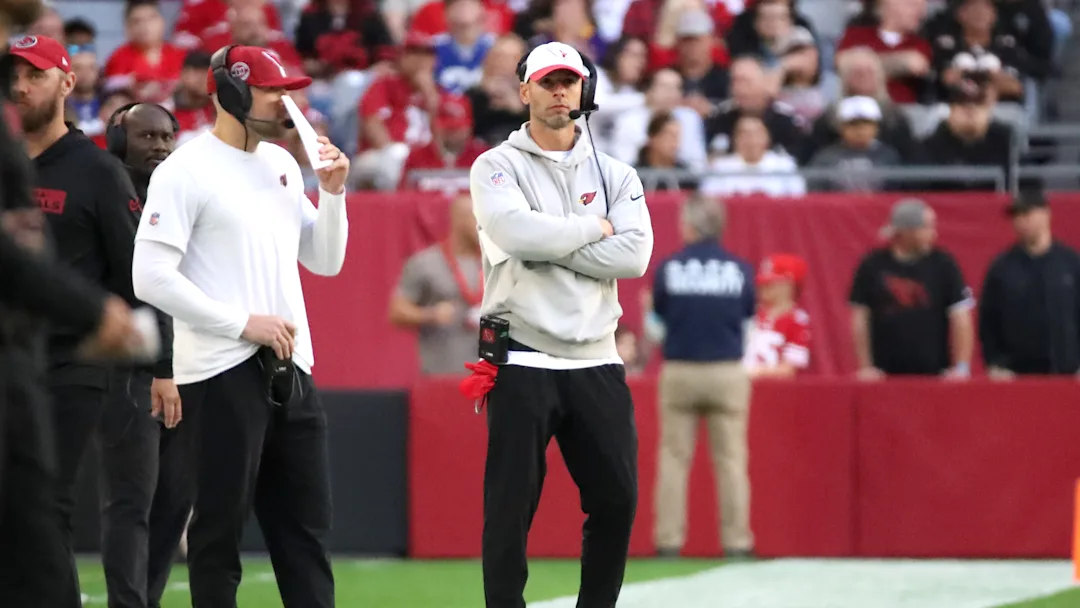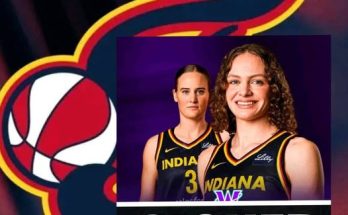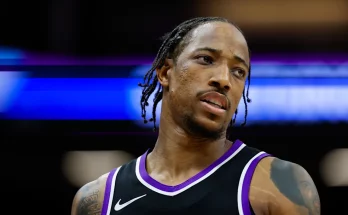The Arizona Cardinals have spent the last few seasons trudging through the unforgiving terrain of the NFL with more questions than answers. From coaching changes to quarterback injuries to roster overhauls, the franchise has endured instability and inconsistency that has stunted its ability to compete in the top-heavy NFC West. As another season looms on the horizon, an NFL analyst has stepped forward with a blunt assessment: if the Cardinals want any hope of salvaging their season and generating momentum toward long-term success, they must make one bold, season-saving move.
That move? Acquiring a proven veteran wide receiver to immediately elevate the offense and provide quarterback Kyler Murray with the reliable weapon he desperately needs.
The Cardinals have long been trying to recapture the magic they found during the early years of Murray’s career—years when the dual-threat quarterback flashed MVP-caliber potential and seemed poised to lead Arizona to sustained success. However, that potential has never fully materialized into tangible playoff wins or deep postseason runs. And while Murray has had his share of ups and downs—ranging from jaw-dropping throws to frustrating injuries—the supporting cast around him has not done him many favors in recent years.
Since the departure of DeAndre Hopkins and the decline of other veteran targets, Murray has had to work with a patchwork group of young receivers, unproven talents, and role players who, while competent, have not changed games or stretched defenses in ways elite offenses require. Marquise “Hollywood” Brown showed flashes but has struggled with consistency and durability. Rondale Moore is electric with the ball in his hands but lacks the size and physicality to be a true No. 1 option. Tight end Trey McBride has become a pleasant surprise, but his development alone cannot mask the glaring hole at wide receiver.
Enter the analyst’s suggestion: go all-in on a trade for a veteran receiver who can still play at a high level—someone who commands double teams, knows how to win routes, and can stabilize a young and evolving offense. Several names have been floated around as possible targets, including Denver’s Courtland Sutton, Tampa Bay’s Mike Evans, and even Buffalo’s disgruntled star Stefon Diggs. While it remains unclear which of these players is actually available, the principle remains the same: the Cardinals must act with urgency to bolster their offensive firepower before the season slips through their fingers once again.
The reasoning is simple: with Murray healthy and expected to return to full form after a difficult injury recovery, Arizona must find out if he is still the franchise’s future. Giving him another year with limited weapons and a shaky offensive line won’t just stunt his performance—it could delay the team’s rebuild altogether. The Cardinals can’t afford to waste another year in purgatory, especially not when the NFC West is slowly becoming more winnable with the Seahawks and Rams undergoing transitions of their own.
Arizona’s front office has already made modest strides this offseason. The addition of rookie wideout Marvin Harrison Jr. with the fourth overall pick in the NFL Draft was a strong start. Harrison is widely regarded as one of the most polished, pro-ready receivers to enter the league in recent memory. But expecting him to immediately shoulder the entire burden of the passing game as a rookie would be a mistake. Even the greats need help. Larry Fitzgerald had Anquan Boldin. Ja’Marr Chase had Tee Higgins. CeeDee Lamb had Amari Cooper. A true WR1, especially one just entering the league, flourishes best when complemented by a veteran who draws defensive attention and models the professionalism required for long-term success.
Acquiring such a player won’t be easy, and it certainly won’t be cheap. But for Arizona, the cost of inaction is far greater. An aggressive trade might mean giving up future draft capital or a promising young defender, but the payoff could be massive. Not only would it allow Harrison to develop at his own pace, but it would also give Kyler Murray a clear chance to prove he can lead the team to contention with the right weapons around him.
Critics will argue that Arizona is still a year or two away from true contention, and that now isn’t the time to mortgage the future. But the analyst in question dismisses this logic entirely. He points to the unpredictable nature of the NFL, where teams can go from worst to first in a single offseason. The Detroit Lions are the most recent and compelling example—a franchise once written off as cursed, now transformed into a legitimate contender thanks to savvy front office moves, strong coaching, and bold acquisitions. The analyst believes Arizona could mirror that turnaround, provided they make the right moves now—not next season, not two years from now, but now.
Another key component of this suggested season-saving strategy involves unlocking Kyler Murray’s full potential with a system tailored to his strengths. In past years, the Cardinals have often tried to fit Murray into systems that didn’t maximize his skillset as a mobile, improvisational playmaker. New offensive coordinator Drew Petzing has vowed to change that. With a more balanced playbook, designed rollouts, and creative route concepts, Petzing hopes to bring out the version of Murray that once terrorized defenses on a weekly basis.
But scheme alone won’t do it. Murray needs receivers who can get separation quickly, win contested catches, and turn short gains into long touchdowns. The Cardinals’ current group, while young and promising, lacks the experience and polish to do this consistently. That’s where a veteran like Evans or Sutton could change everything. Not only do these receivers offer elite traits, but they also bring leadership, accountability, and professionalism—qualities that can elevate an entire locker room and influence younger players like Harrison Jr. in invaluable ways.
Defensively, the Cardinals are also a work in progress. Their pass rush has been inconsistent, and the secondary—while young and athletic—has not yet developed into a lockdown unit. However, the analyst emphasizes that Arizona’s defense was never expected to be a dominant unit. What they need is complementary football. An offense that can control the clock, move the chains, and finish drives with touchdowns would keep the defense fresher and reduce the pressure to play perfect football every week.
This is why the proposed move—a veteran wide receiver—is seen not just as an offensive upgrade, but as a holistic improvement to the entire team. It could stabilize the locker room, give the coaching staff more options, and finally give fans a product on the field worth getting excited about.
Arizona’s ownership has signaled that they are committed to a long-term vision. General manager Monti Ossenfort has emphasized building through the draft and being financially responsible, which makes sense in theory. But the NFL is not a league that rewards passivity. Teams that wait too long for the perfect moment often find themselves passed by hungrier, bolder rivals. The Cardinals have cap space. They have draft capital. They have a quarterback with elite talent who is finally healthy. They have a blue-chip rookie receiver. The time to strike is now.
If the Cardinals swing for the fences and bring in a veteran receiver who can be a true difference-maker, they won’t just be trying to save this season—they’ll be making a statement. A statement that they believe in Kyler Murray. A statement that they’re tired of rebuilding. A statement that they’re ready to contend.
And if that move pays off, this season won’t just be salvaged. It could be the start of something special.



